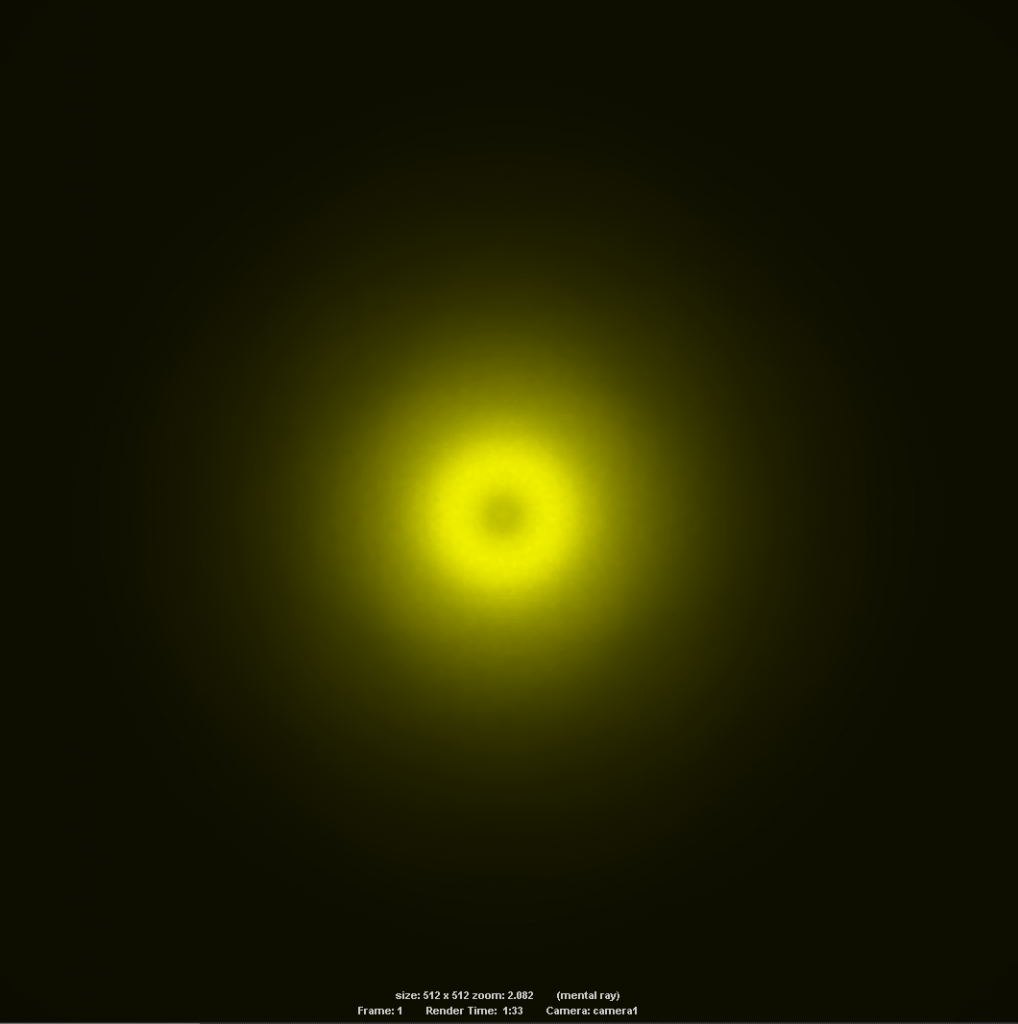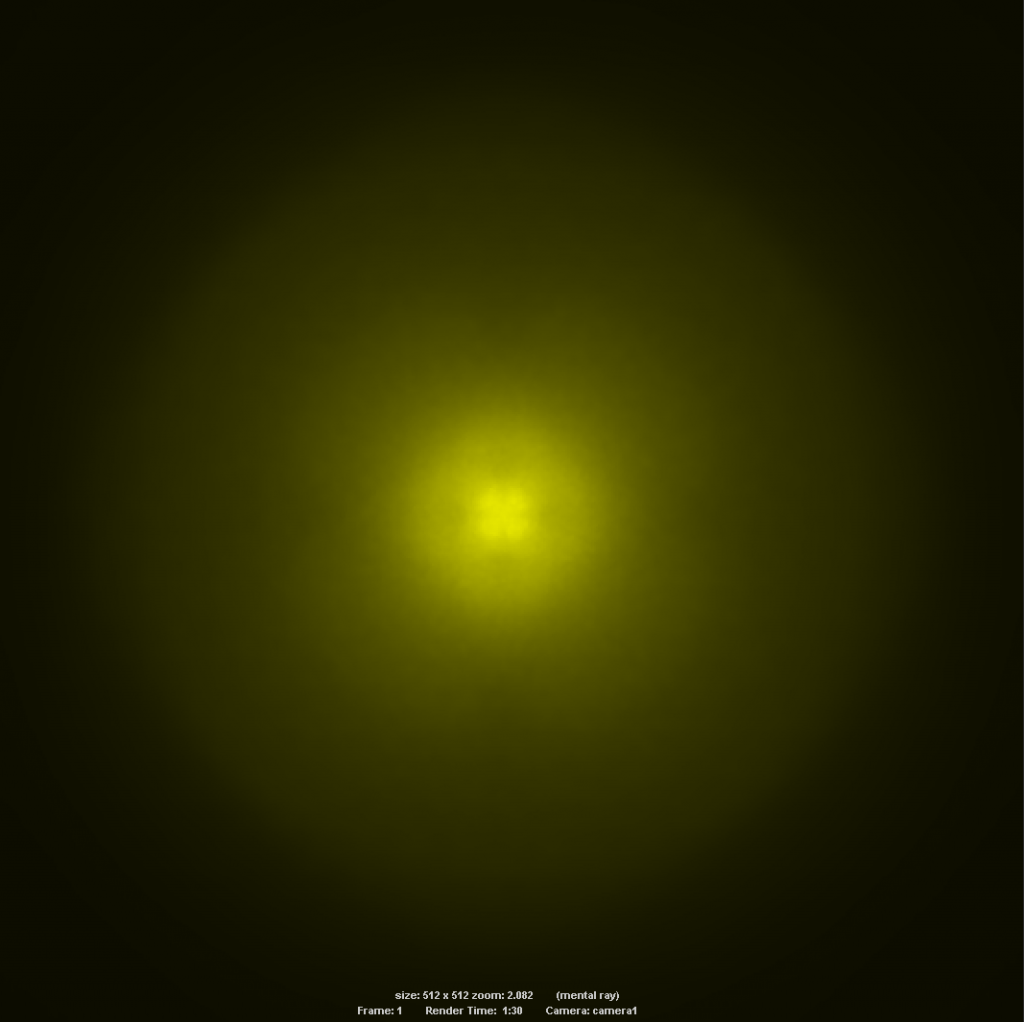It’s a little off topic and I’ll post this stuff somewhere else once I do a bit more work on this.
Anyway, inspired by these new quad die emitters I started doing some reflector simulations with varying emitter die shapes and it’s starting to show some interesting stuff.
I modelled a mathematically correct paraboliod reflector of a generic depth (something proportioned like a c8 reflector). Dimensions are fairly irrelevant for this test since the die is also arbitrarily sized for now.
I simulated the die shape as the light source (no dome!) and traced the photons using a global illumination solution in mental ray. I wasn’t sure if the system was going to be accurate enough for these kind of tests (there’s lots of fudging and optimization going on), but with accuracy cranked to the max and a generous amount of simulated photons the results started showing some useful stuff.
-
Here’s the hotspot results with the emitter sitting bang on (as close as I can get) the focal plane of the reflector and projecting the hotspot onto a plane sitting more or less at infinity.
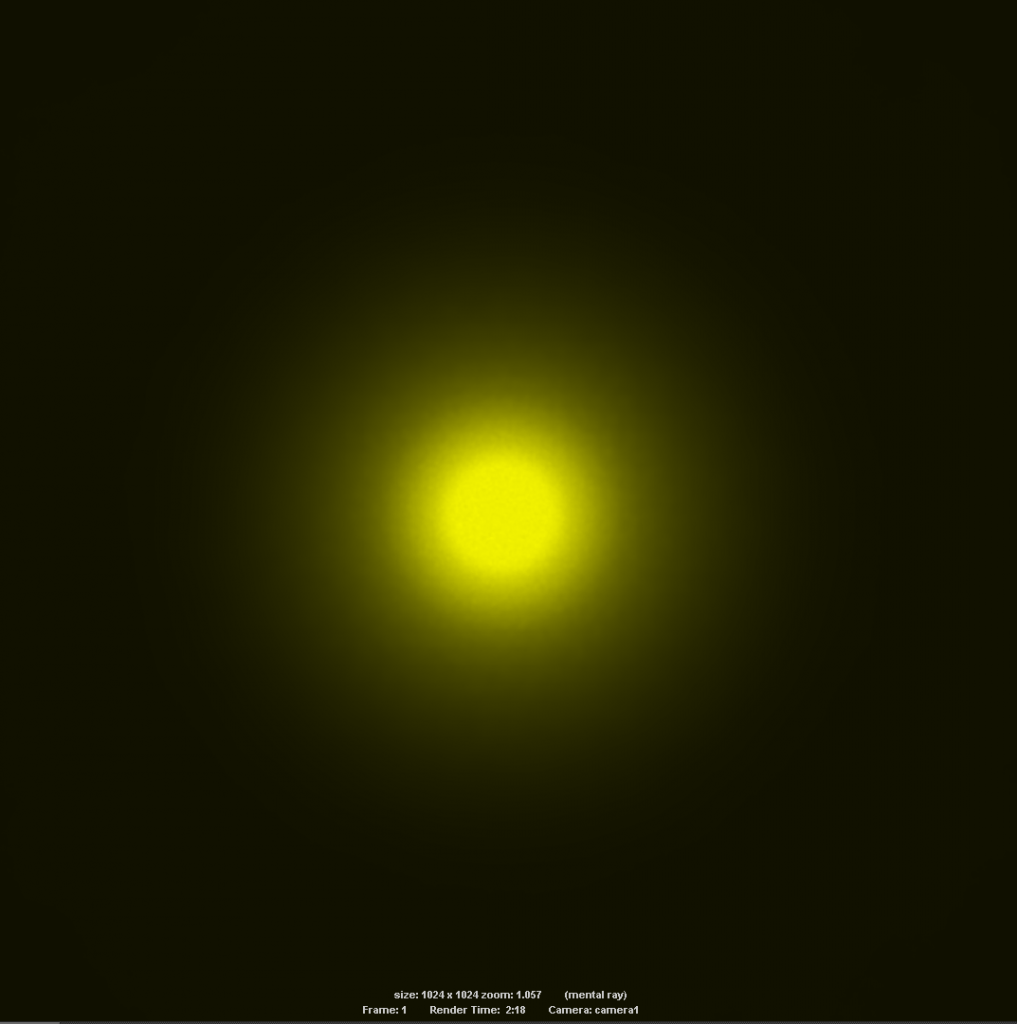
Circular Die (ie SBT-70) - Very clean hotspot! Just Lovely 
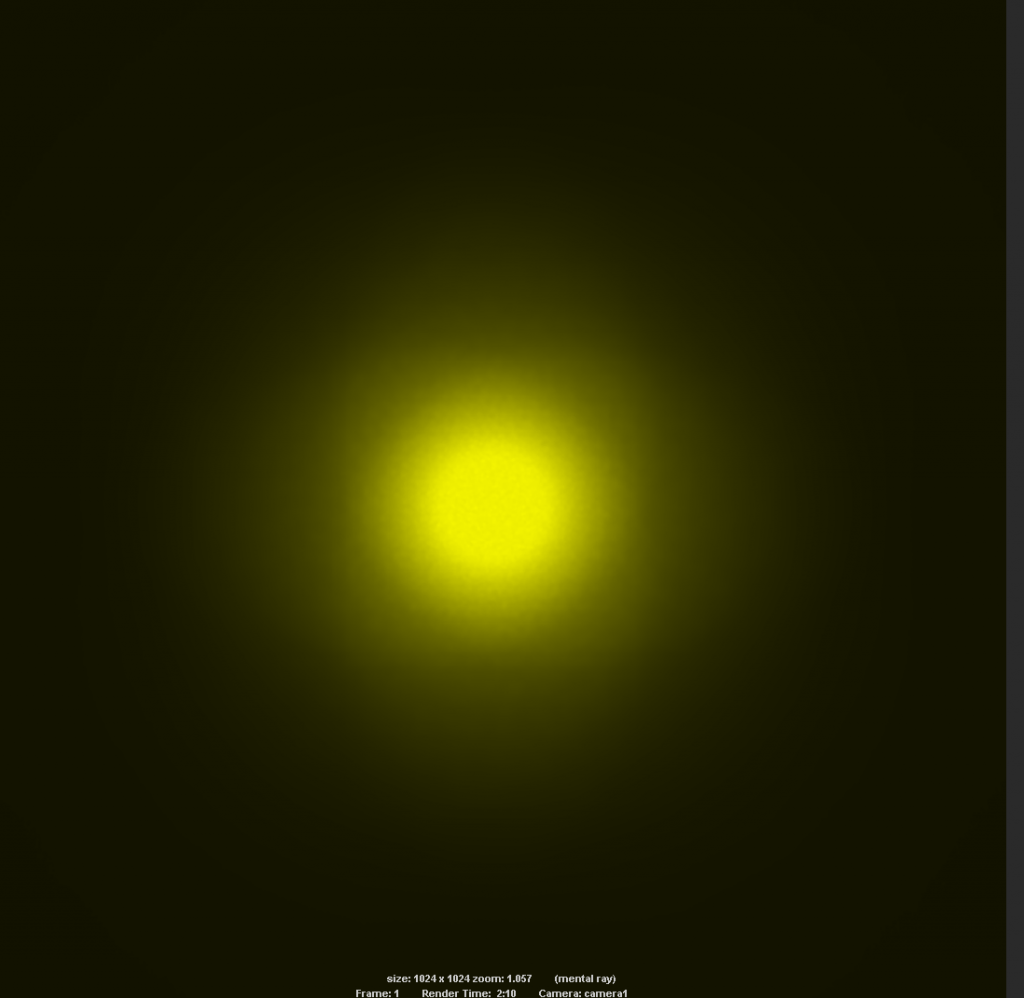
Square Die (ie XM-L) - This is what we’re all used to seeing. Note those distinctive petal shapes in the corona.
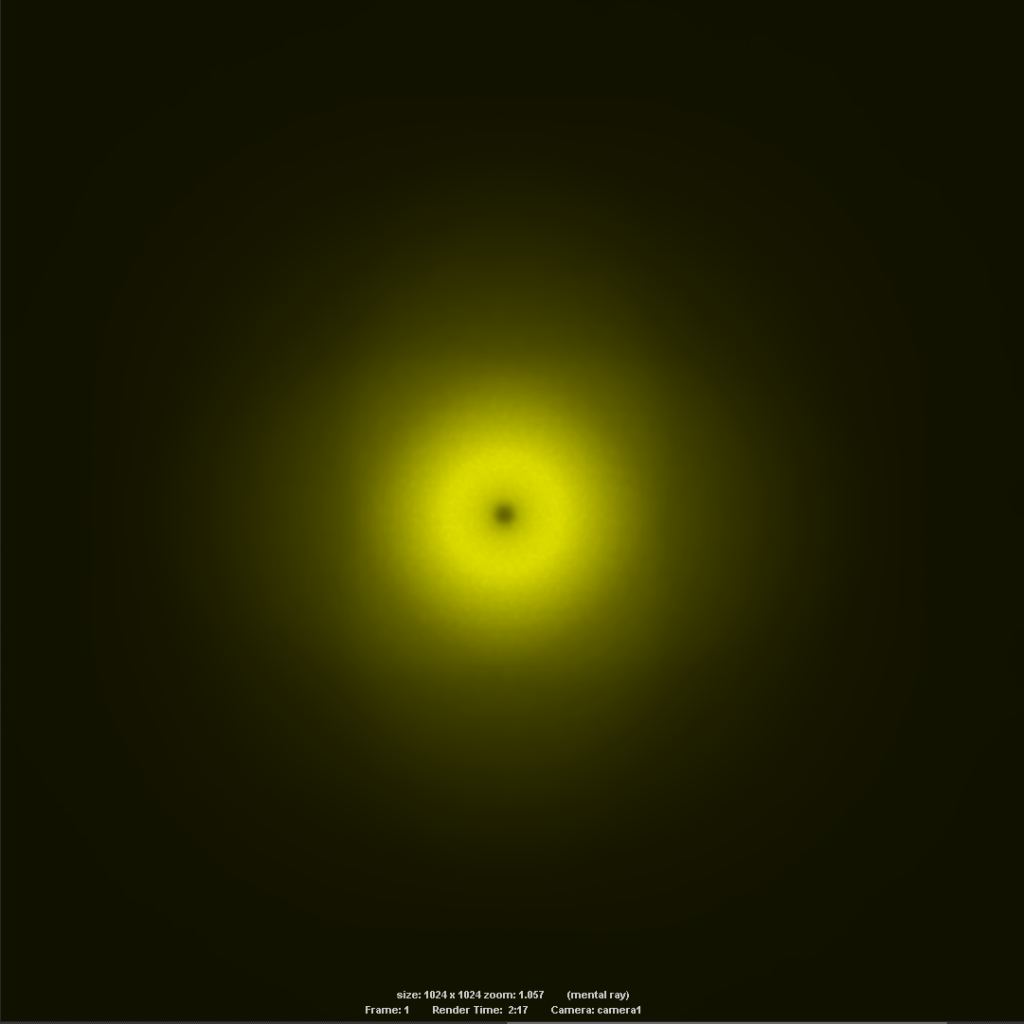
Quad Die (ie XHP-xx) - Very similar to square die but with a pronounced dark center, or donut.
So that’s an indication of the absolute best case scenario for projecting a die image from the focal point. Obviously for the square and circular dies this is a good target to achieve since it produces the most cleanly defined hotspot at large distance. For the quad-die however we may need to try a bit of fiddling! 
-
Here’s what happens when the quad emitter is pushed deeper into the reflector, i.e by removing material from the back of the reflector, raising the emitter on a pedestal etc.
I figured pulling the emitter further out of the reflector would be a less desirable solution since that also reduces the amount of light that hits the reflector and as a result lowers output.
The increments are again an arbitrary unit, maybe about 0.5mm each time. If people find this useful I could do some more scientific tests with accurate measurements to try and find a sweep spot for this type of emitter.
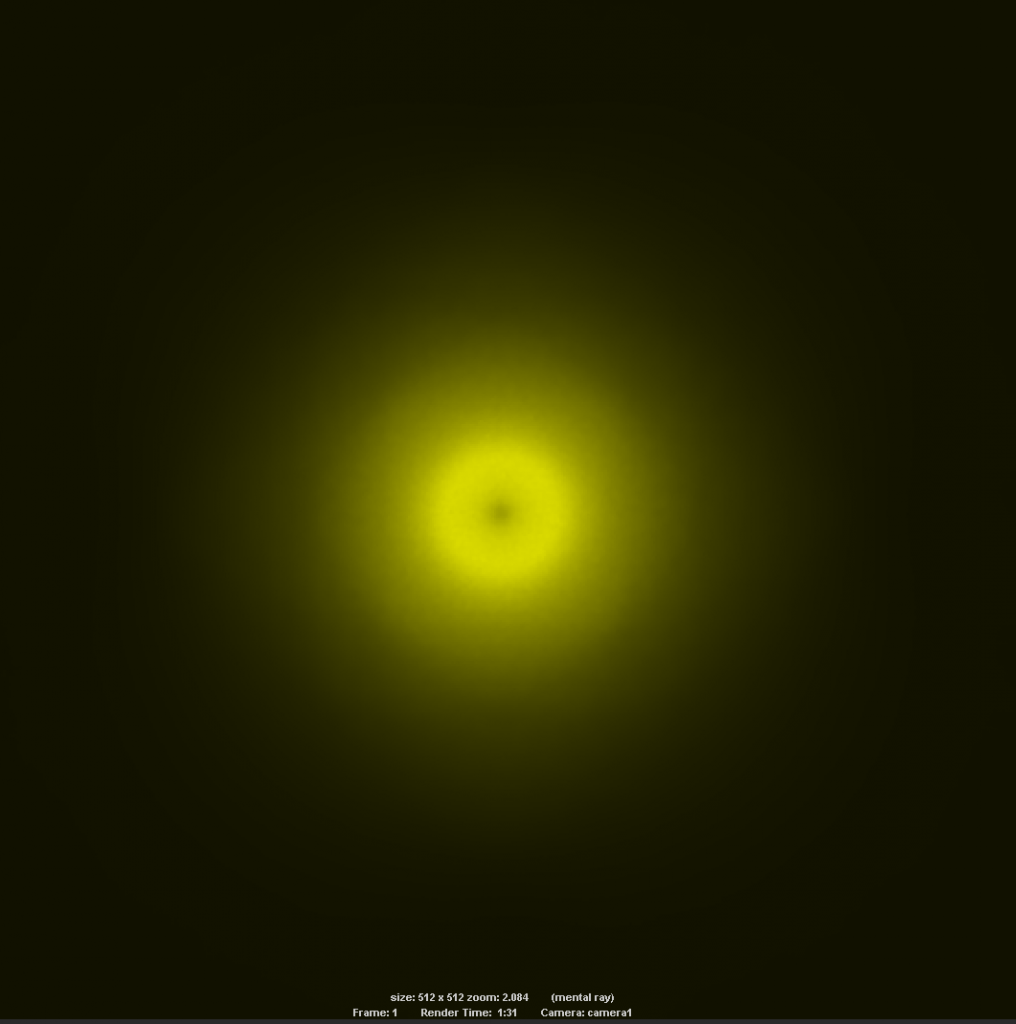
Emitter moved +5 units into the reflector. Center of hotspot looks better than before but the donut is still obvious.
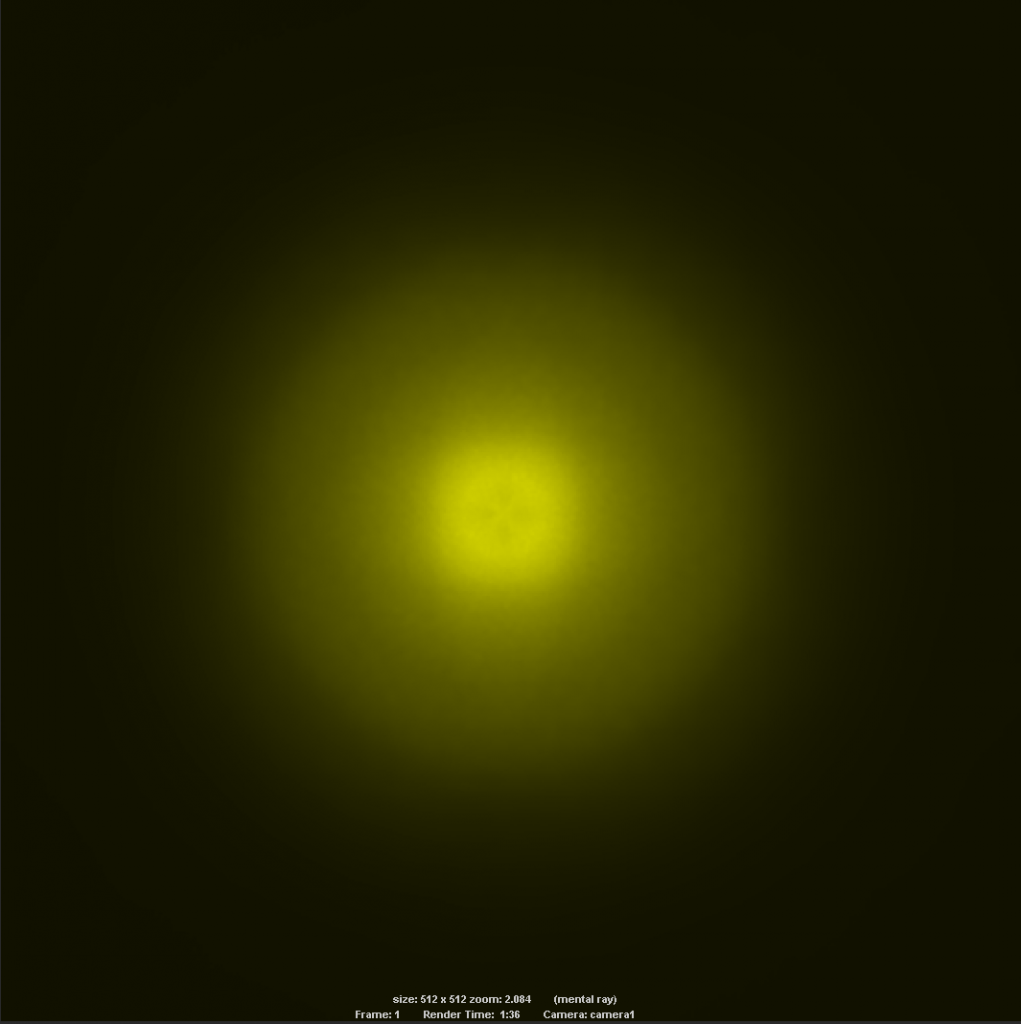
Emitter moved +10 - Note the appearance of the dim cross at the center. This seems like it may be the best compromise point, although the corona is rather large.

Emitter moved +15 - Really funky stuff starts to happen here! The hotspot suddenly got quite a bit more intense, and I had to tweak exposure of the render down. Don’t take this to mean that this setup is going to be best for throw, it may be something to do with those optimizations in the photon calculation I mentioned earlier.
It does seem to indicate a flip though, now the center of the hotspot is indeed the brightest part of the beam, maybe somewhere between the last two points is even better. More testing required.
-
So that’s what I’ve been playing with, I’ll do some more when I get a chance. It’s quite fun and I might be able to produce some handy animations or reference images that people can use to recognize when they’ve properly focused their custom led light. Or to recognize in which direction they need to tweak things if things aren’t looking right, I know when I was starting to play with led lights that this stuff was an incredibly frustrating aspect. Man those HD2010s used to annoy the crap out of me! 
I will also do the triple reflector experiment for the XHP to see if combining off-center positioning with depth in the reflector in a certain way can eliminate the Quad-Die artefacts completely without resorting to an OP surface.
Maybe I’ll come up with something that works well enough to tempt me into buying a few of these beasties! 8)







